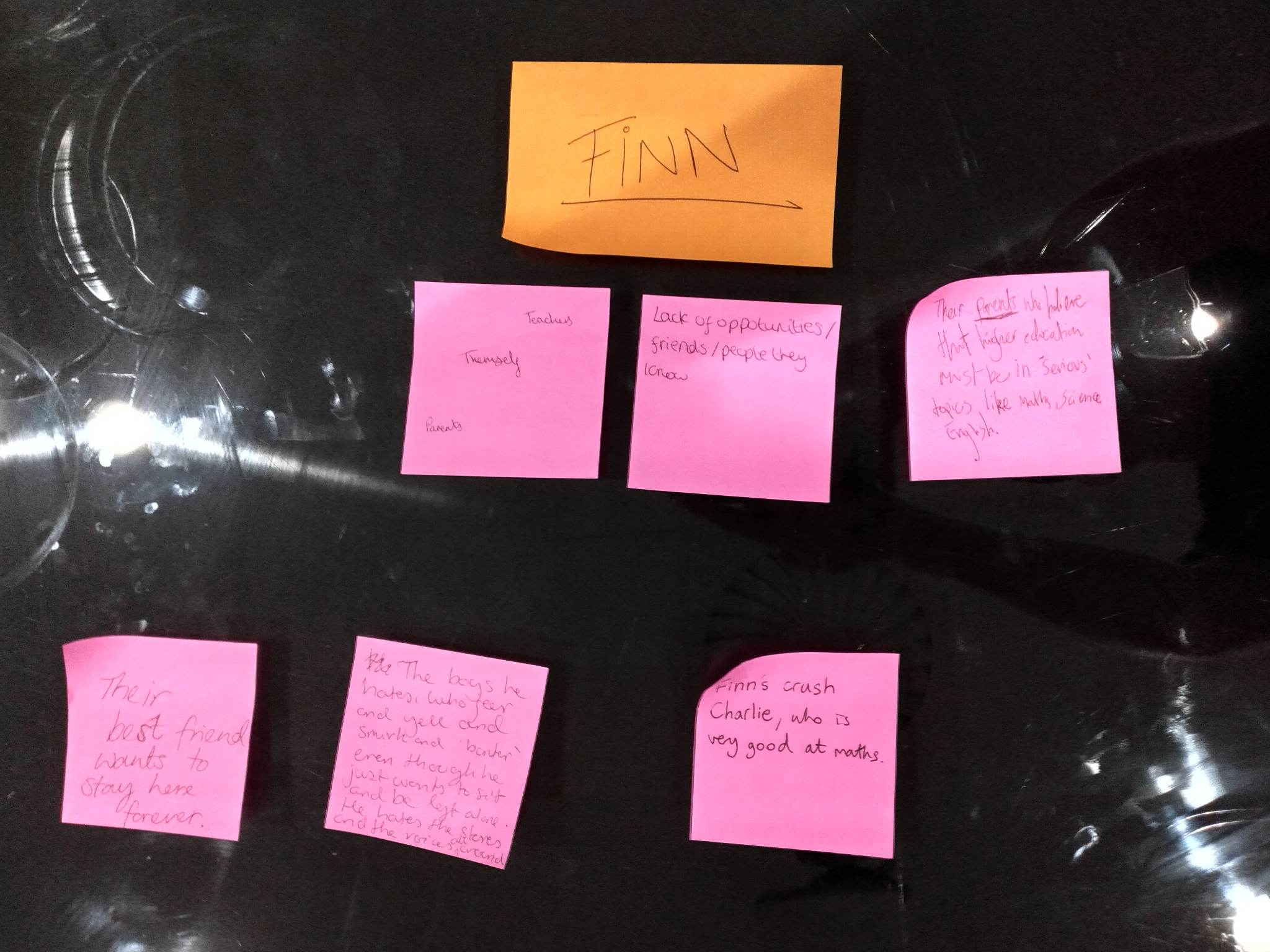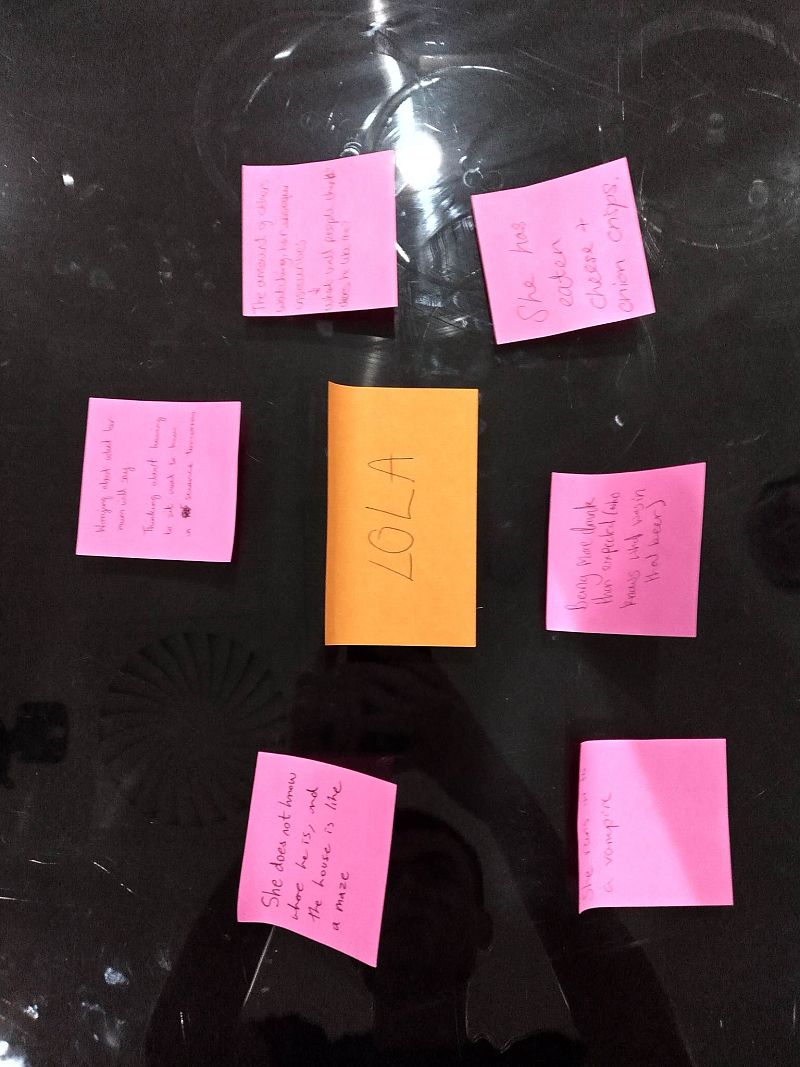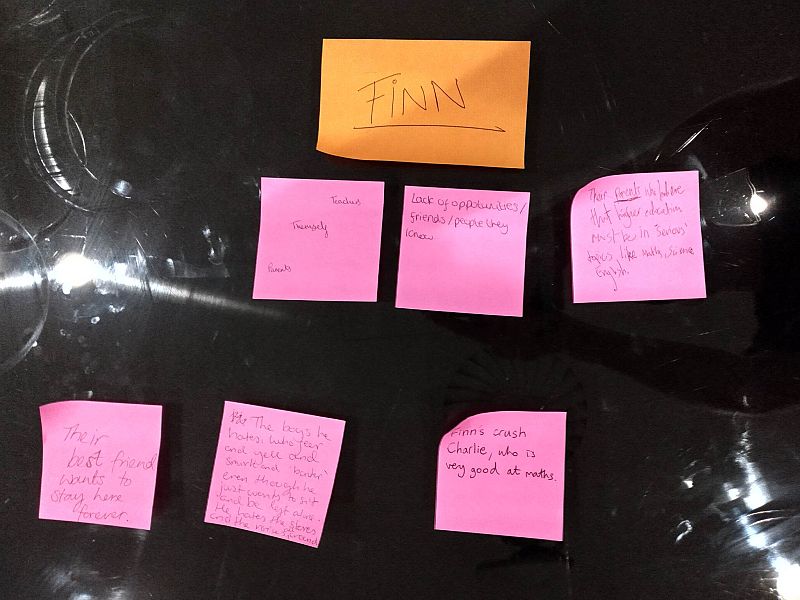01 November 2022

Cheese and onion crisps
Welcome to the blog for ArtfulScribe’s
newly titled writing group for 15-18 year olds, Writing for Stage and
Performance, which began this week led by Lydia Rynne.
Lydia writes professionally for
stage, screen and radio.
The goal of the sessions will be to
have fun. There are no silly questions and no such thing as bad writing in the
room. It’s a place to give it a go – no pressure.
If you’d like to join in, go to ‘Engage’
at mayflowerstudios.org.uk and book on for free.
***
To get creative juices flowing, we
began this week with a couple of freewriting exercises.
Write for 5 minutes starting with
the prompt ‘Listen, can you hear that?’.
Write for 3 minutes starting with
the prompt ‘Who turned out the lights?’.
Everyone shared what they’d written,
which included a story about a lifeless corpse in a dark Victorian study.
We discussed the differences between
a character speaking in first-person prose and a monologue performed on stage,
identifying the biggest difference to be the presence of the audience.
What do you think is special about the
audience being in the room?
The plays that stand out to Lydia
are ones with good characters who, by trying to overcome a problem, create plot
and drama – from character, the rest falls into place.
Think about one of your favourite fictional
characters (and pick a few words to describe them).
Ours included: Mei from Turning Red
(fun, romantic, colourful), Hermione Granger from Harry Potter (seen as: bossy,
nerdy, but is actually: ambitious, clever), and Wilhelm from Young Royals (sorrowful,
heavily repressed).
Lydia told us that 1 or 2 key traits
can give us really good stories, from the ways the characters behave in the
present moment, which is what story is all about onstage. Whereas in books, we
can get into the nitty-gritty of someone’s internal feelings and backstory,
onstage things are primarily visual and current.
Watch this monologue (click here)
from Chewing Gum Dreams by Michaela Coel.
From the monologue, what do you know
about the character, and what do you think she wants?
We got the sense the character was
desperate and dependant, as well as optimistic, and that she was on a mission
to prove and validate the relationship she talks about.
Watch this monologue (click here)
from DNA by Dennis Kelly.
From the monologue, what do you know
about the character, and why do you think she’s talking?
We got the sense the character was paranoid
and self-deprecating, desperate to know others’ opinions about her and at the
same time not to be judged as self-conscious, and that she was talking to
convince who she was speaking to that she was confident and unbothered.
Picture in your mind somebody who
you’ve noticed in the past 2 days (a stanger on the bus, in the supermarket, on
the street etc.) and give them a name that might suit them.
Answer the questions below about your
chosen character.
- Are they mainly happy or mainly sad
(glass half full or glass half empty)? - Who do they share their deepest
darkest secrets with? - Do they think before speaking or
speak before thinking? - What don’t they like about
themselves? - What do they like about themselves?
- What’s their greatest fear?
- What do they want more than anything
else in life? - What do they want today?
- What is stopping them from getting
this thing they want today?
Write for 10 minutes as that
character, using their voice and trying as much as possible to stay in the
present (e.g “The bouncy castle is deflating! I don’t know what to do!” etc.).
Watch this monologue (click here)
from Seawall by Simon Stephens.
Think about the character’s
relationship to the audience.
We identified lots of pauses and the
character seeming to cringe at their own words.
As a writer, you can specify the way
a character is talking, such as these that we came up with:
- Upending sentences
- Talking really fast with no pauses
- Voice going high for a teacher or
parent - Talking with hands
Take the character you wrote in the
voice of and think about how they talk – their rhythm.
Write for 10 minutes: a monologue
from this character’s perspective, going after something they want.
Our characters included: an aspiring
mathematician following in the footsteps of Galileo and Pythagorus; a girl who
wants to spend winter with her cat and cinnamon rolls, and a girl looking for her
crush at a houseparty.
Take your character and identify
their motivation – what do they want?
We each wrote on a post-it-note an
obstacle for each other’s characters – either something or someone stopping
them from getting what they want. (See pictures below)
We then ordered / prioritised the
suggestions into the most overarching problems (e.g: overall, Lola doesn’t have
confidence) and the ways they manifest and are exacerbated by the more minute
present actions (the current reasons Lola is not confident e.g: she is lost, she
is drunk, her breath smells of cheese and onion crisps).
We ended by watching City Creature
by Arinzé Kene (click here to watch).
***
Writing for Stage and Performance will
return next week!
If you’d like to join in, go to ‘Engage’
at mayflowerstudios.org.uk and book on for free.
Was this blog helpful to follow
along to? Let us know @artfulscribeuk


Archive
Young Writers - Week 10 (The Art of Writing) – Final Week Showcase
Junior Writers - Week 10 (The Art of Writing) – Final Week Showcase
Young Writers – Week 9 (The Art of Writing) – Choose Your Own Adventure
Junior Writers – Week 9 (The Art of Writing) – Choose Your Own Adventure
Young Writers – Week 8 (The Art of Writing) – Sequel Stories
Junior Writers – Week 8 (The Art of Writing) – Sequel Stories
Young Writers – Week 7 (The Art of Writing) – Picture Prompts
Junior Writers – Week 7 (The Art of Writing) – Picture Prompts
Young Writers - Week 6 (The Art of Writing) - Script-writing & Dialogue
Junior Writers - Week 6 (The Art of Writing) - Script-writing & Dialogue
Junior Writers – Week 5 (The Art of Writing) – Poetry
Young Writers - Week 5 (The Art of Writing) - Poetry Potions
Edward The Martyr - A Competition!
Mood Boards and Postcards from Space
Young Writers - Week 3 (The Art of Writing) - PLOT
Junior Writers - Week 3 (The Art of Writing) - PLOT
Moomin Stories and Hollywood Pitches
Young Writers - Week 2 (The Art of Writing) - Genre & Setting
Junior Writers - Week 2 (The Art of Writing) - Genre & Setting
Prompts, Dialogues, and Cliché
Story Structure Part One: Exposition and Beyond...
Young Writers - Week 1 (The Art of Writing) - Character
Junior Writers - Week 1 (The Art of Writing) - Character
Young Writers - week 4 - Nature Writing [animals & wildlife]
Junior Writers - week 4 - Nature Writing [animals & wildlife]
Young Writers - week 3 - Nature Writing [trees/plants/flowers]
Junior Writers - week 3 - Nature Writing [trees/plants/flowers]
Young Writers - week 2 - 'fractured fairy tales'
Junior Writers - week 2 - 'fractured fairy tales'
Young Writers - week 1 - 'from deep inside a forest'
Creating Communities through Writing
WORDCUP - Hounsdown Session #6
Making pillows in a house full of feathers
WORDCUP - Hounsdown Session #5
Exploring home – a place, person, house
WORDCUP - Hounsdown Session #4
Stories From Our Streets at the Abbeyfield Wessex Society Reminiscence Session at Poole Library
What Do You Really Mean? Writing Dialogue for Scripts
WORDCUP - Hounsdown Session #3
Character Building & Murder Mysteries
Going inside – from a spark to a story
WORDCUP - Hounsdown Session #2
Maybe I Can Be Invisible After All... Monologues
Creative Writing: Fun Facts, Diverse Voices and Different Perspectives
Writing Competition - Stories From Our Streets
Stories From Our Streets Community Activity Pack
Thinking in-quiet, after the fire
Found Cities, Lost Objects: Women in the City Curated by Lubaina Himid CBE
Ekphrastic Jukebox - Writing to Music
ArtfulScribe LitFest Community Showcase 2023
Young writers exercise their creative power
Writing to The Sorcerer's Apprentice
The Mousetrap - Mayflower Young and Junior Writers Investigate Mystery!
Stories From Our Streets Launch!
Interview: In Conversation with Dr Victoria Leslie
The Missing Farmer/ Blackout Poetry & DADA
Exploring this wonderful World
Using props to create characters/ working as a writing room
Stories of the Dust and Character Questions
Storytelling and Escalation or Rising Action
Junior Writers Club Acrostic Poem
Notes on Intention for MAST Collective - Year 3 - Facilitation Focus
Earthquakes & Dominoes - MAST Collective Blog #4
SUPER MARIO AND POP CULTURE POEMS
Receptionists & Inky Voids - MAST Collective Blog #3
Saying No and saying YES on National Poetry Day!
There's a Dragon in the Wardrobe...
House Warming Party (The Mortifying Ordeal of Being Known) - MAST Collective Blog #2
Intern Blog 5 - The Publishing Process
POEMS TO SOLVE THE CLIMATE CRISIS
On The Streets With Theresa Lola
Intern Blog 4 - The Internship Journey
NEW DIRECTIONS, STARTING SMALL - THE ORWELL YOUTH PRIZE
LIGHTHOUSES, HOPE AND METAPHORS
on workshop and transformations: frogs, lions, and the duck that becomes a larder...
Poetry Ambassadors - Interview with April Egan
Intern Blog 1 - Finding a Voice
World Poetry Day: Fluffypunk and the Invisible Women
On Being a Writer: A Conversation by Beth Phillips & Sam Morton
Poetry Ambassadors - Interview with Kaycee Hill
UNHEARD VOICES: INTERNATIONAL WOMEN'S DAY, AND STORIES OF CONFLICT













